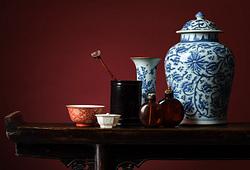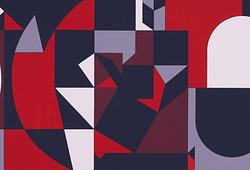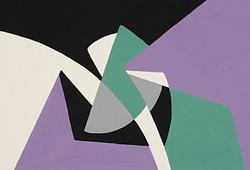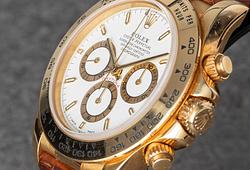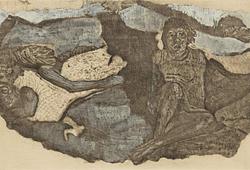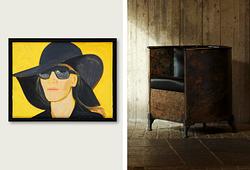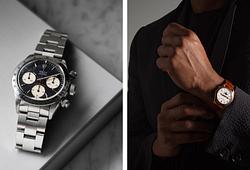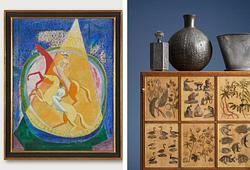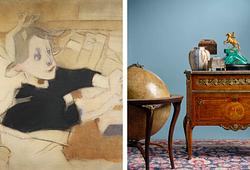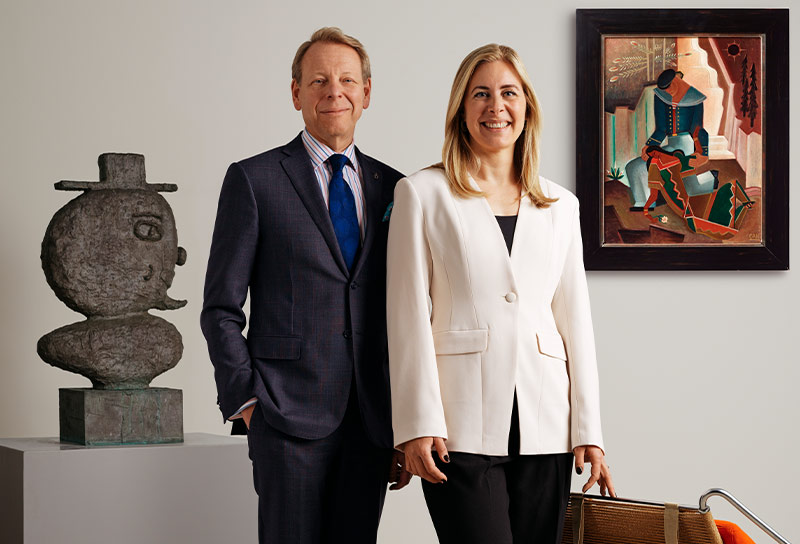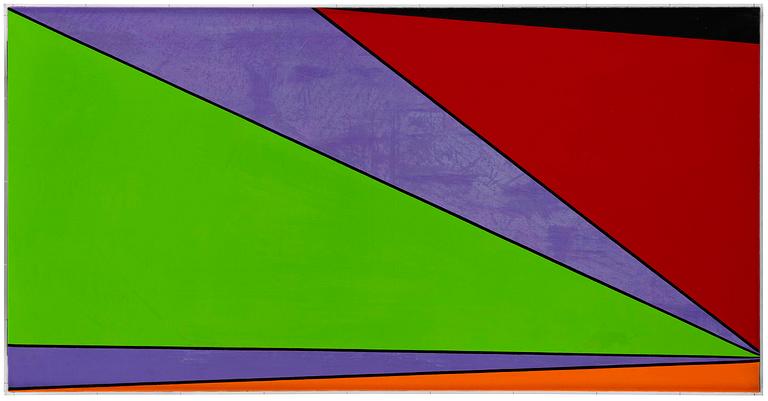Olle Bærtling
"DENE"
Signed Baertling and dated 1960 verso. Canvas 92 x 180 cm.
Provenance
Galleria Lorenzelli Arte, Milan.
More information
Olle Baertling was an individualist, but also an innovator in both Swedish and international art. The large number of exhibitions around the world in which Baertling participated over the years testifies to the fact that he managed to make a name for himself abroad even during his lifetime. It was not until the 1960s that Baertling truly began to gain recognition in his native Sweden. At that time, he also collaborated on major projects with leading architects of the era, such as Peter Celsing on the Kulturhuset (House of Culture) and David Helldén in Hötorgscity and at Frescati.
After beginning to paint in a figurative style in the 1930s—alongside his work as a bank clerk—he traveled to Paris in 1948 and studied there with André Lhote and Fernand Léger. Baertling maintained strong ties with Paris and soon became part of the circle around the gallerist Denise René. After 1950, Baertling completely abandoned figurative painting to devote himself fully to concrete art. It was also during the 1950s that he found his signature style, which he would continue to develop for the rest of his life. Over time, Baertling came to refer to his compositional system as "open form."
The painting DENE is monumental, and with its powerful expression, it can dominate almost any space. Five black lines divide the surface into six fields, each painted in one of Baertling’s unique color tones. The painting is dominated by a large green field, which is contrasted with two violet areas. Violet had appeared in Baertling’s work a few years earlier, though initially in a much lighter tone. Over time, the color darkened. Baertling considered violet one of the most important colors. According to him, it conveyed increased speed, greater monumentality, and a more conscious direction of the black lines.
Artist
Olle Bærtling was born in Halmstad in Sweden and is most notable for his painting and sculpture. Bærtling studied like Bengt Lindström in Paris for André Lhote and Fernand Léger. His first exhibition took place in Stockholm in 1949. Bærtling works foremost in a geometric, non-figurative style, approaching his art as a scientist would his research. In 1956 Bærtling discovered his open form, the open trangle with sharp angles which express speed. When in 1956 he positioned the apex of the triangle beyond the boundaries of the frame, the canvas became merely a segment of an event occurring beyond our visual field. The sense of speed is emphasized by the colour, which gives the impression of higher velocities the closer to the triangle’s apex. Black outlines are strong characteristics of Bærtling’s art, while they may seem straight, they actually bend inwards towards the large fields, counteracting their outward pressure. Colour was also essential to Bærtling’s work, whereby it was imperative that they could not be found in nature and were not associated to any form or object. Thus Bærtling only utilised secondary colours: violet, orange, green, and Bærtling-white (a week green-tinted colour). His open form is most evident in the sculptures he made from 1958 onwards. Bærtling consistently delved into the interplay between colors and shapes, remaining unaffected by external artistic trends throughout his life. Today, we can see how artists such as Ann Edholm have been inspired by Bærtling's creations.
Read more




